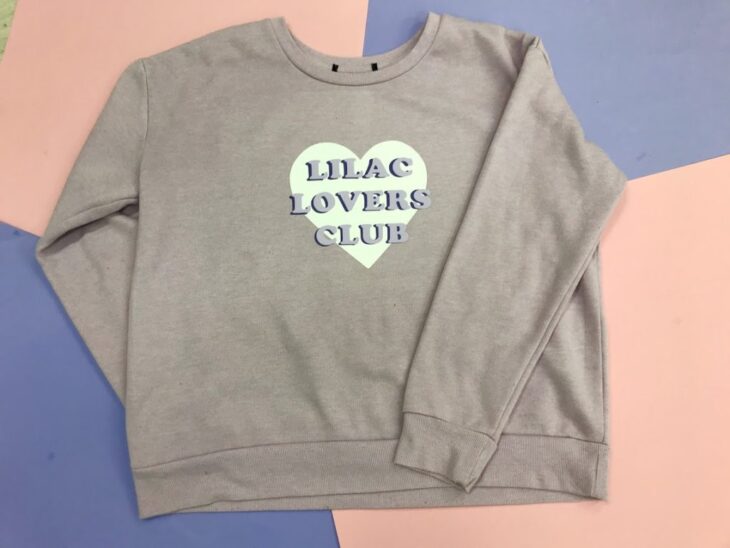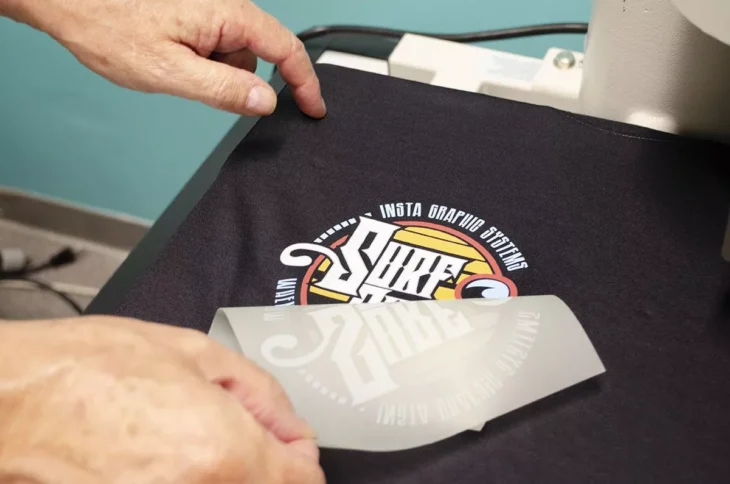The wonderful world of heat transfer vinyl decorations has probably encouraged you to go on Google and look at ways to decorate various items. From t-shirts to handbags, anything with a soft surface can be customized with vinyl. But the question remains; can you use regular vinyl for heat transfer?
The short answer is no. For that, you will need heat transfer vinyl. Lucky for you, there are tons of heat transfer vinyl types to perform the craft. From the standard material to glitter and even glow-in-the-dark vinyl, the options are limitless.
So with all that said, let’s look at what exactly HTV is and how to get started.
Contents
What Is HTV (Heat Transfer Vinyl)?

Source: daydreamintoreality.com
As mentioned previously, we use HTV specifically on soft surfaces for the purpose of decorating. The items that we can add HTV on include t-shirts, handbags, bags, garments, and similar fabric items. The way HTV makes this possible is very easy to follow through. The material has an adhesive backing that gets activated when in contact with heat.
Once that happens, it needs to b pressurized to be applied onto the surface. After the whole process is complete, you end up with a decorated item.
Due to the rise of personalization in the industry, HTV becomes very popular. Much like custom printing, HTV gives you the same level of personalization due to the fact that designs can be digitally edited. This means you can HTV custom designs on t-shirts, bags, etc.
An additional reason why HTV is so great is that it is highly durable. The material will not get damaged through time as vinyl is highly durable itself.
How To Get Started With HTV?
Much like a custom printing business, you can turn HTV into a profitable business. To do that, you will need to acquire the necessary machines. So, here is a definitive list of all the machines you’ll need.
1. Get A High Quality Heat Press
Since we’re effectively pressing the material onto the surface, the first machine on your shopping list should be a high quality heat press. A heat press is a type of machine that retains heat and applies pressure to a surface.
A quality machine will make all the difference. But what makes it quality? A couple of factors play a role in determining how good a heat press is. One of the factors is efficiency. Namely, how efficient is the machine? How many items can the machine press at once? And what’s the ideal use case for the machine? Is the machine designed for home crafts or a business?
These are all questions you need to answer before you buy a quality heat press.
2. Stock On Alignment Tools
When performing each press, you will need alignment tools to make sure the designs come up as intended. Without alignment tools, you will have a tough time performing each press. There are a few tools to focus on with this one. One of the most important ones is a layout board. A layout board is an alignment tool that allows you to accurately align custom designs and letters for each press job. The reason why this tool is so good is that it is the most affordable tool to get.
Another tool to get is tape, more specifically, heat-resistant tape. You use this tool to keep the graphics in place before you put the press down. Since the tape is heat-resistant, it will not melt under the pressure of the heat press.
HTV businesses rely on these tools to make sure their designs don’t get ruined. If you’re interested in an HTV business that can print custom designs for you, make sure to give HTVRONT a visit.
To finish up the list of alignment tools, let’s wrap it up with one of the most important ones – a laser alignment system. A laser alignment system is by far the most accurate alignment tool out there. It is a type of tool that works on every heat press machine. It measures, projects the layout grid, and does everything you need to make sure the graphics are properly aligned.
3. Extra Plates
A heat press comes with a platen that you use to place the items you want to HTV onto. But in some cases, we might require designs to go onto sleeves, chest logos, etc. In that case, you’ll need to get extra plates. Some might be bigger, others might be smaller. But the best worth for your money is to get interchangeable platens. These plates can be heated from both sides and allow you to swap one side for another when adding the vinyl.
Types Of Vinyl To Use

Source: happyfabric.co.uk
We mentioned earlier that there are a few types of vinyl to use. Now, let’s get into what those types are and explain them.
• Flocked HTV
You might recognize this type from the get-go. Namely, the biggest characteristic of flocked HTV is that it raises the vinyl. The material is super soft and gives a textured look. For those of you looking to start an HTV business, this material is the easiest one to start with.
• Glitter HTV
Glitter can be used on a 50/50 blend of cotton or polyester materials. It can also be used on 100% cotton and 100% polyester materials. But what makes this type of HTV so unique is that it is thicker and has a sandy feel – almost like glitter. As a matter of fact, it looks exactly like glitter.
• Metallic HTV
This type is the thinnest one out there. It looks quite shiny with a metallic finish, hence the name. There are certain subtypes of metallic HTV that can reflect. This is achieved through a process that we will not get into. But the shiny finish is what makes metallic HTV so desirable.
• Holographic HTV
This is yet another thick vinyl that comes in a myriad of colors and finishes. The highlight of the holographic vinyl is that it gives a multi-dimensional effect. It really looks unique in its own way.

